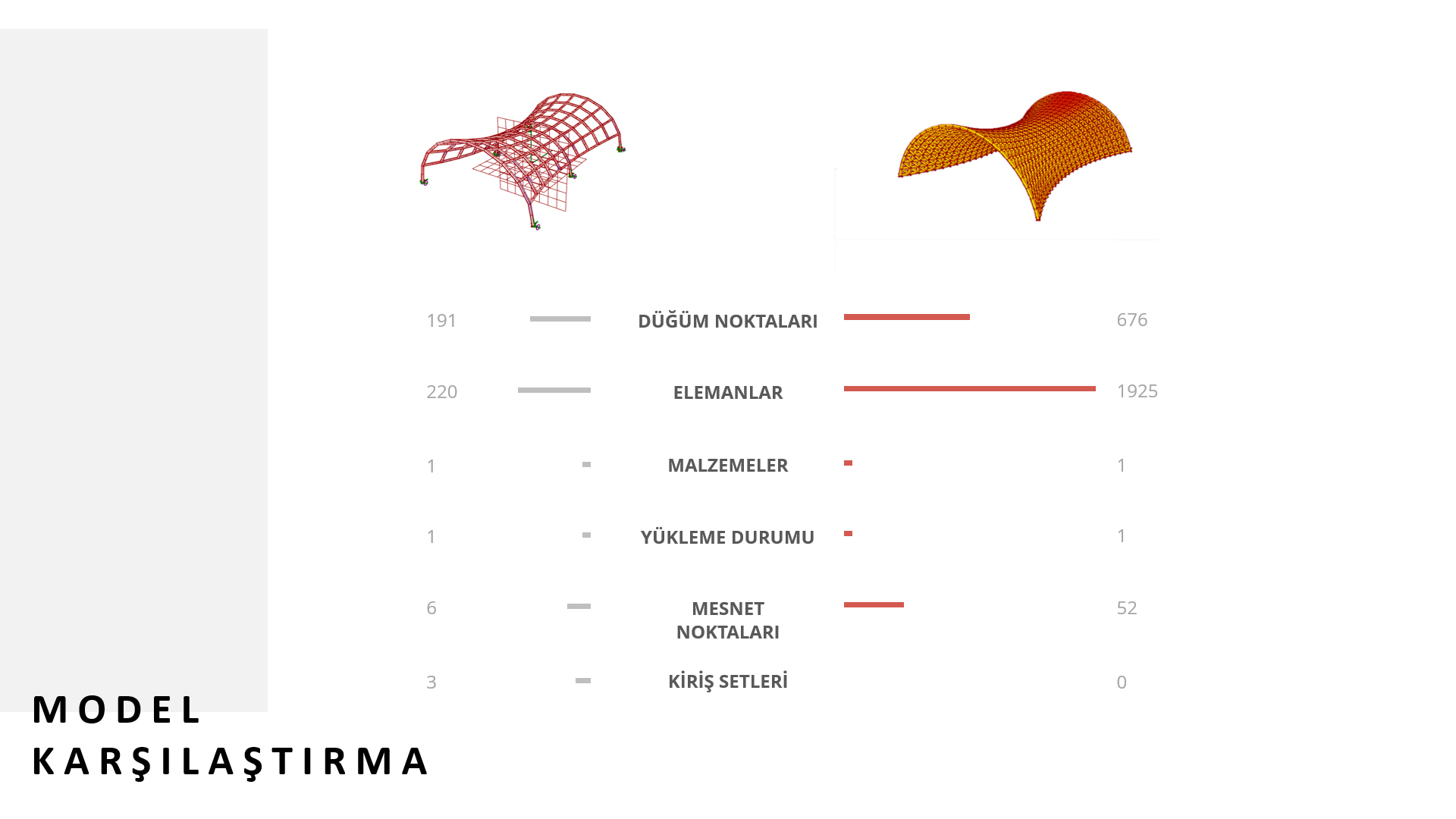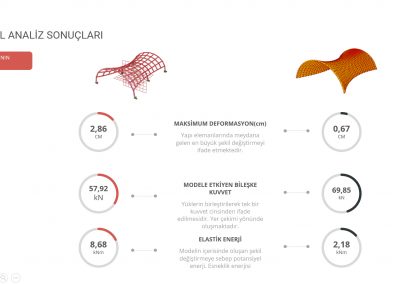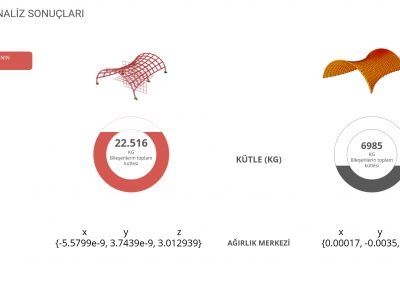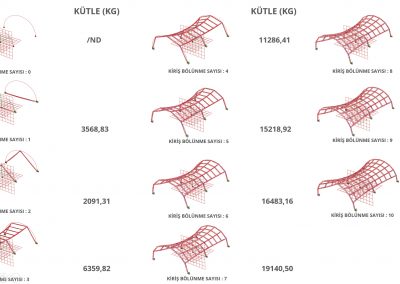
Ön Tasarım Evresinde Mimari Form Alternatiflerine Yönelik Taşıyıcı Sistem Davranışlarının Görselleştirilmesi
Mimari formun belirlenmesinde ön tasarım aşaması küçük değişimlerle en büyük faydaların üretilebildiği evredir. Ön tasarım evresinde güneş ışığından faydalanma miktarı, hâkim rüzgâr, topoğrafya, çevre yapılarla kurulan ilişki, bölgesel mimari malzemeler, iklim özellikleri gibi verilere oldukça dikkat edilse de yapının strüktürel davranışları yeterince göz önüne alınamamaktadır. Bunun nedenleri, strüktürel analiz için uzmanlaşmış tasarımcı veya mühendis gerekmesidir. Strüktür tasarımcısı yapı formunun belli bir gelişmişlik düzeyine ulaştığı evrede bilgi akışına başlamaktadır. Ana formun belirlenmiş olduğu bu evrede strüktürel veriler tasarımı besleyen bilgi olmaktan ziyade tasarımı gerçekleştirmek için çözüm üreten görevi üstlenmektedir. Taşıyıcı sistem hesaplamalarında zemin davranışları, sismik özellikler, kullanılacak malzemelerin dayanım verileri, yapının hangi amaçla kullanılacağı gibi fazla sayıda bileşen bulunmaktadır. Bu düzeyde detaylı bir analize zaten tasarım süreçlerini sürdüren mimarın girmesi mümkün değildir. Ayrıca mimar, strüktürel davranış konusunda ileri seviyede eğitim de almamıştır. Tüm bunlara rağmen bir binanın formu kabaca ortaya çıktığında bazı strüktürel verilerin tasarım bilgi havuzuna eklenmesi, tasarımın eşsizleşmesini, tasarımcının kararlarını daha doğru almasını ve mimari forma strüktürün de yön vermesini sağlayacaktır. Bu çalışmada ön tasarım aşamasında, mimari form ortaya çıkmaya başladığında hem parametrik tasarıma hem de geleneksek tasarıma yönelik strüktürel analizler yapıp sonuçlar üretebilecek hesap aracı önerilmektedir.
Visualization of Structural System Behaviors for Architectural Form Alternatives in the Preliminary Design Phase
In determining the architectural form, the preliminary design phase is the phase where the greatest benefits can be produced with small changes. In the preliminary design phase, although attention is paid to data such as the amount of sunlight, the prevailing wind, topography, the relationship with the surrounding structures, regional architectural materials, and climatic characteristics, the structural behavior of the building cannot be taken into account sufficiently. This is because structural analysis requires a specialized designer or engineer. The structural designer starts the flow of information at the stage when the building form reaches a certain level of development. In the phase where the main form is determined, the structural data undertakes the task of producing solutions to realize the design rather than being the information that feeds the design. There are many components in structural system calculations such as soil behavior, seismic properties, strength data of materials to be used, and the purpose for which the structure will be used. It is not possible for the architect who continues the design processes to be involved in a highly detailed structural analysis. In addition, the architect did not take advanced courses in structural behavior. Despite all this, when the form of a building is roughly determined, adding some structural data to the design information repository will ensure that the design is unique, that the designer takes decisions more accurately, and that the structure also guides the architectural form. In this study, a calculation tool that can produce results by making structural analyzes for both parametric design and traditional design is proposed during the preliminary design phase, when the architectural form begins to emerge.
© 2021 Istanbul Technical University Graduate School, Department of Informatics, Architectural Design Computing Program. All Rights Reserved


